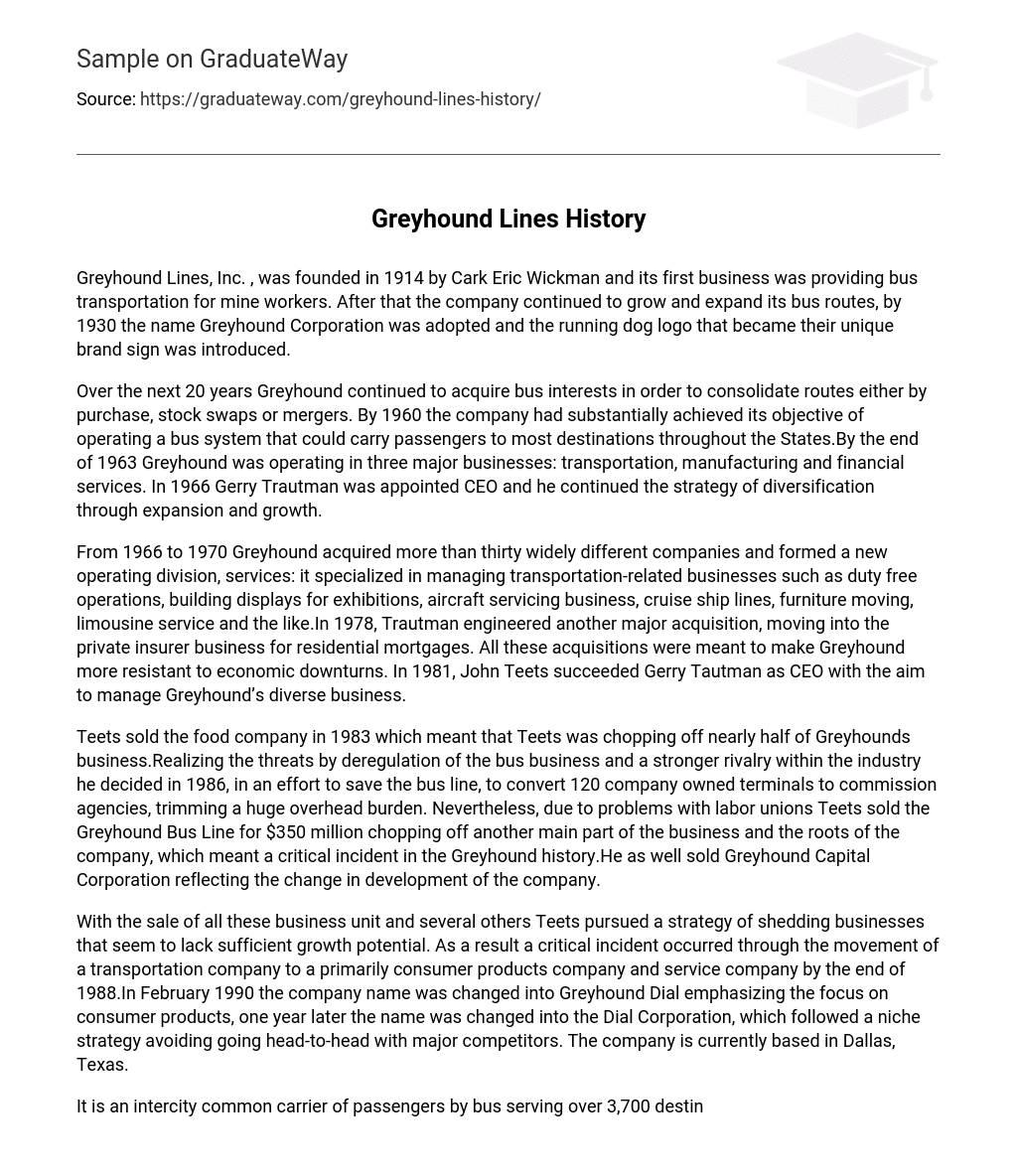Greyhound Lines, Inc. was founded in 1914 by Cark Eric Wickman with the primary aim of providing bus transportation to mine workers. The company experienced growth and expansion, leading to its rebranding as Greyhound Corporation by 1930. It was during this period that the recognizable running dog logo, serving as their distinctive brand symbol, was introduced.
Greyhound’s bus offerings expanded over the next two decades through acquisitions, stock exchanges, and mergers. By 1960, Greyhound had built a strong bus network that provided transportation to almost any destination in the US. Furthermore, by the end of 1963, Greyhound entered three important sectors: transportation, manufacturing, and financial services. Gerry Trautman assumed the position of CEO in 1966 and actively pursued diversification through expansion and growth.
Between 1966 and 1970, Greyhound underwent a period of expansion, acquiring over thirty different companies and creating a new division called services. This division specialized in managing various transportation-related businesses, such as duty free operations, exhibition display building, aircraft servicing, cruise ship lines, furniture moving, and limousine service. It aimed to make Greyhound more resilient to economic downturns. In 1978, Trautman orchestrated another significant acquisition, venturing into the private insurer business for residential mortgages. In 1981, John Teets took over as CEO, succeeding Gerry Trautman, with the goal of effectively managing Greyhound’s diverse range of businesses.
In 1983, Teets sold the food company, resulting in nearly half of Greyhound’s business being cut off. Recognizing the threats posed by bus business deregulation and increased competition within the industry, he made the decision in 1986 to convert 120 company-owned terminals into commission agencies. This move aimed to reduce a significant overhead burden and save the bus line. However, due to labor union issues, Teets sold the Greyhound Bus Line for $350 million, further cutting off a crucial part of the business and the company’s roots. This event marked a critical incident in Greyhound’s history. Additionally, Teets sold Greyhound Capital Corporation, reflecting changes in the company’s development.
Teets implemented a strategy of divesting businesses, including others, that appeared to have limited growth potential. This led to a significant event where a transportation company shifted its focus to consumer products and services by the end of 1988. In February 1990, the company rebranded as Greyhound Dial to highlight its emphasis on consumer products. Just one year later, another name change occurred and it became the Dial Corporation as part of a niche strategy aimed at avoiding direct competition with major competitors. Presently, the company is headquartered in Dallas, Texas.
Greyhound, a subsidiary of British transport company FirstGroup, operates as part of FirstGroup America and offers transportation services to over 3,700 locations in the United States, Canada, and Mexico.





